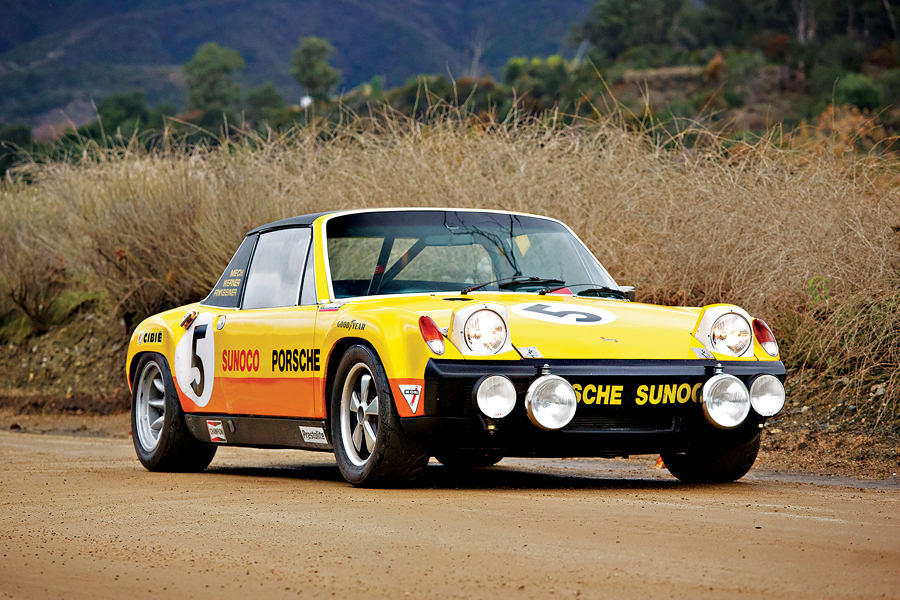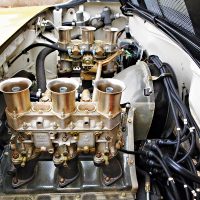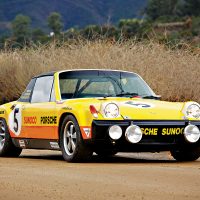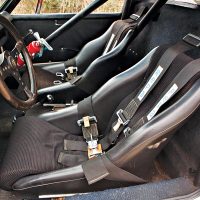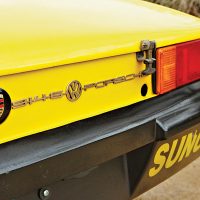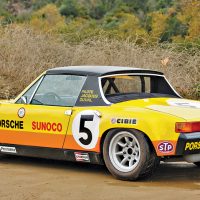SCM Analysis
Detailing
| Vehicle: | 1970 Porsche 914/6 |
| Years Produced: | 1970 |
| Number Produced: | 16 |
| Original List Price: | $11,500 |
| SCM Valuation: | $1 million (this car) |
| Chassis Number Location: | Left corner of windscreen |
| Engine Number Location: | By distributor base at front (with twin plug distributor it’s effectively invisible) |
| Club Info: | Porsche Club of America |
| Website: | http://www.pca.org |
| Alternatives: | 1965–71 Alfa Romeo GTA, 1966–70 Porsche 911S, 1963–67 Alfa Romeo GTZ |
This car, Lot 33, sold for $995,000, including buyer’s commission, at Gooding & Company’s Scottsdale, AZ, auction on January 17, 2020.
In the real-estate business, one of the most important truisms is that the best investment is the cheapest house in a great neighborhood. Yeah, it might be a tract house, but the builder is the same, the stuff inside is every bit as exotic as the fancy, bespoke stuff up the street, and you are always welcome at neighborhood parties to share tales of gauntlets thrown and victories achieved as a direct peer to the big dogs.
In a nutshell, this is the situation for our subject Porsche 914/6 GT. It is probably the least-expensive factory racing Porsche that you could buy, but it is still a full-pop racing Porsche, built as a customer car but raced as effectively a factory entry at Daytona and Sebring in 1971.
This car has the chops to sit with the big boys.
Howdy, neighbor
During the late 1960s, Volkswagen wanted a new car to replace their Type 35 Karmann Ghia, which had never lived up to expectations as their top-of-the-line halo car. At the same time, Porsche wanted a better entry-level offering than their 912, which was seen (with justification) as a 911 with a cheap engine.
Since the very early days, Porsche had done the majority of the development work for Volkswagen, although both companies had by then pretty much outgrown the need for the association. There was one last development project left on the contract, though, so it was appropriate for Porsche to develop the Type 914 for both companies.
The original concept was that there would be one car with two engines: The 4-cylinder would be sold as a Volkswagen and the 6-cylinder as a Porsche.
It was a nifty design, as it was the first mid-engine sporting car to hit the market, with wheels out on the corners for a compact car with very low polar moments. There was only one body style, a Targa-roofed two-seater built with steel body panels over a steel unibody chassis structure.
Porsche was concerned with their brand in the United States, so both the 4-cylinder cars and 6-cylinder cars were branded as Porsches in the North American market. The 4-cylinder cars were sold as VW-Porsche in the rest of the world. Karmann built all of the rolling chassis, shipping the fours to Volkswagen and the sixes to Porsche for engine installation and final assembly.
I recall driving one of the first 914/4s to find its way to Colorado, and was impressed by how compact and quick it felt, but I was also very aware that it was still a Volkswagen. It was soft, with lots of body roll and a severe lack of horsepower. As such, the car earned the sniveling condescension that only a relatively young Alfisti could bestow. The 6-cylinder car, of course, was a different matter.
It’s you I like
Sharing a chassis and almost all details with the VW 914, Porsche set to deliver a real Porsche to its 914/6 customers. The engine, although a detuned version of the 911T, still delivered 110 horsepower to the VW’s 80 horsepower. The 914/6’s brakes were bigger and vented in front. The wheels were wider, the gearing was shorter to accommodate the higher-revving 911 engine, and roll bars were installed front and rear.
I don’t know for sure, but I suspect that spring rates were increased as well. It certainly created a completely different feeling in the performance, which was now sporting, crisp and balanced, notably quick and light on its feet as compared to the 914/4.
Although an impressive car, the 914/6 was never a commercial success. Visually undifferentiated from the 914/4 (look for a numeral 6 on the back), it ended up only slightly cheaper than the 911T sitting next to it on the showroom floor.
Porsche gave up on it in 1972, having sold only 3,351 of them (versus 115,000 of the 914/4). It was replaced with the unlamented 924, which had its own issues.
It’s such a good feeling
Short, stiff and light, the 914/6 chassis proved to be an excellent basis for a production racer.
Although up to its neck with the 917 and 908 pure racers in FIA endurance racing, Porsche found time to develop the 914/6 as an entrant in the production-based Grand Touring class.
As a mid-engine design, it had substantial advantages in handling and weight (230 pounds lighter) over the 911 S racers while using effectively the same engine.
To make the conversion, Porsche strengthened the chassis and front suspension, replaced the deck lids, bumpers and rockers with fiberglass, and fitted much larger brakes and wheels with appropriate spring and shock upgrades. The engine went from an anemic 110 horsepower to a strong 210 hp at 8,000 rpm — while remaining at 2 liters.
The 914/6 GT proved itself to be a very successful racer. In 1970 it took 1st in class and 6th overall at Le Mans — and finished 1-2-3 at the punishing 86 hours of Nürburgring.
Our subject car was sold new to Canada where, with Sunoco sponsorship and factory help, in 1971 it took 1st in class and 7th overall at Daytona and (while struggling with throttle-cable issues) 4th in class at Sebring.
Won’t you be my neighbor?
One of the enduring issues with collector interest in warrior-class racers is that they lose their treasured originality as they are used on the racetrack. Engines and transaxles get blown up and replaced, bodies get smashed, and eventually they molder away in some back corner before being rediscovered.
Today’s car was far luckier, being raced only a few more times before being sold to a Porsche Club true believer who detuned the engine, painted it silver — and then used it as his personal street treasure. It then passed through a series of equally loving owners before being brought back to its original racer configuration with virtually all original components.
Air-cooled Porsche values rose for years during a feeding frenzy that faded after about 2015. The past few years have not been particularly kind to most air-cooled Porsches.
Certain cars have managed to avoid the downward drift in market enthusiasm — particularly Porsche’s factory-backed pure racing cars. The number of suitors waving their paddles for RS, RSK, 904, 906 and 908 racers has dropped, but there are still at least a few there, and the hammer price for the eventual buyer has held up well.
We are back to talking about the great Porsche race-car neighborhood: It’s still an excellent place to be.
Today’s 914/6 GT sold for a bit under the published estimate, which suggests that it barely met reserve and the seller had to be realistic about nodding yes, but it was the right answer.
This was an excellent car, fairly bought and sold — and the most economical entry into a great neighborhood. ♦
